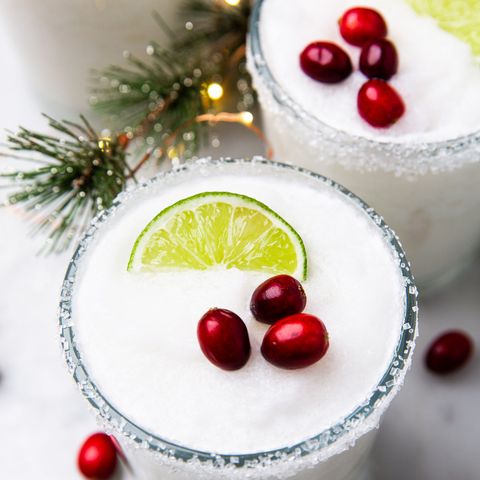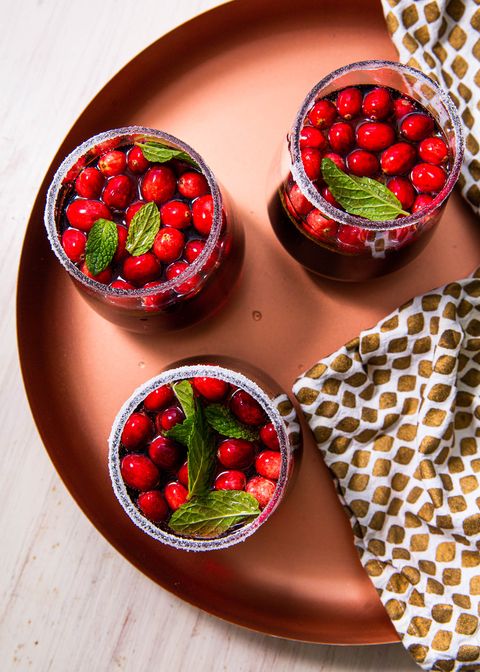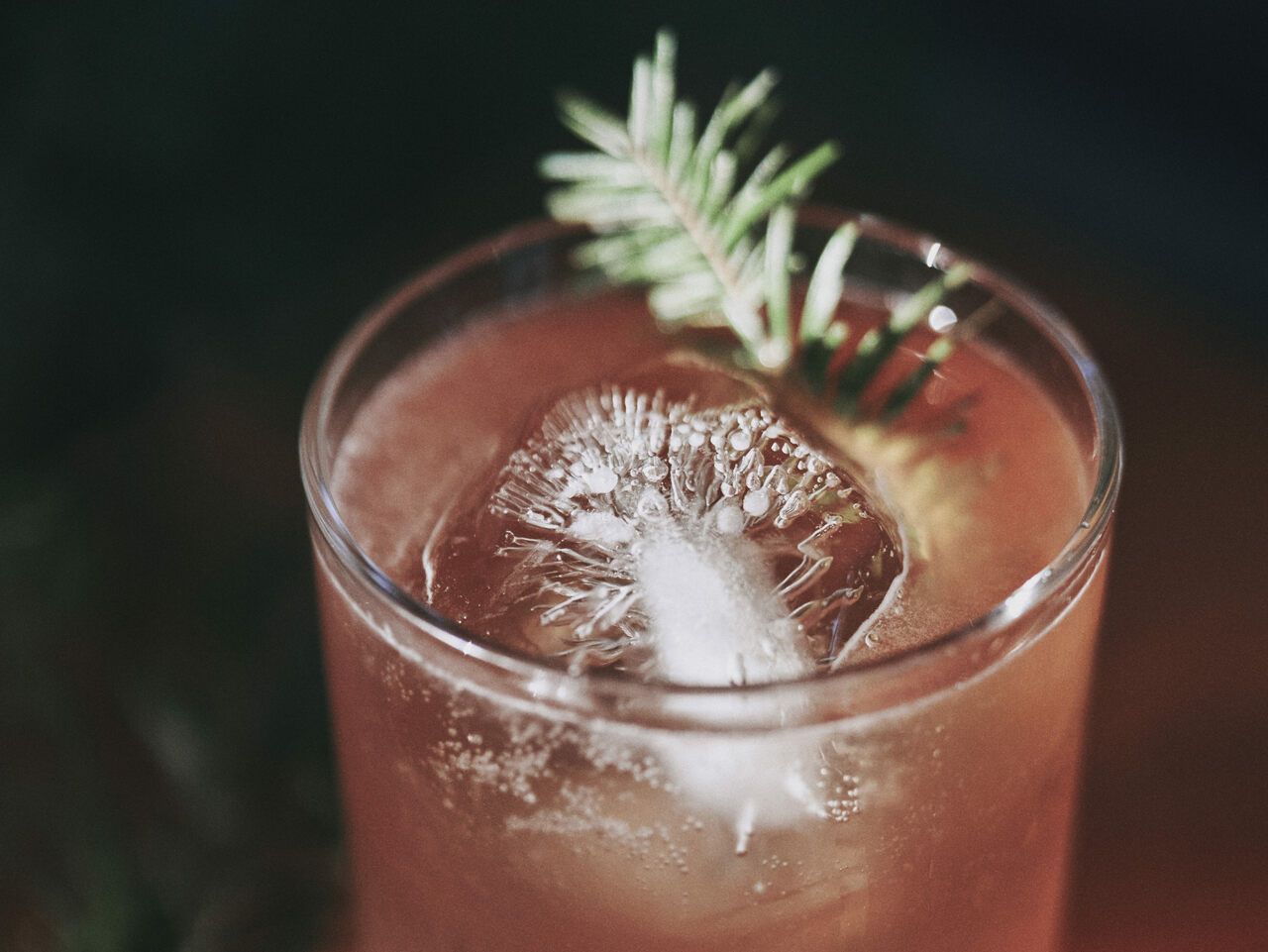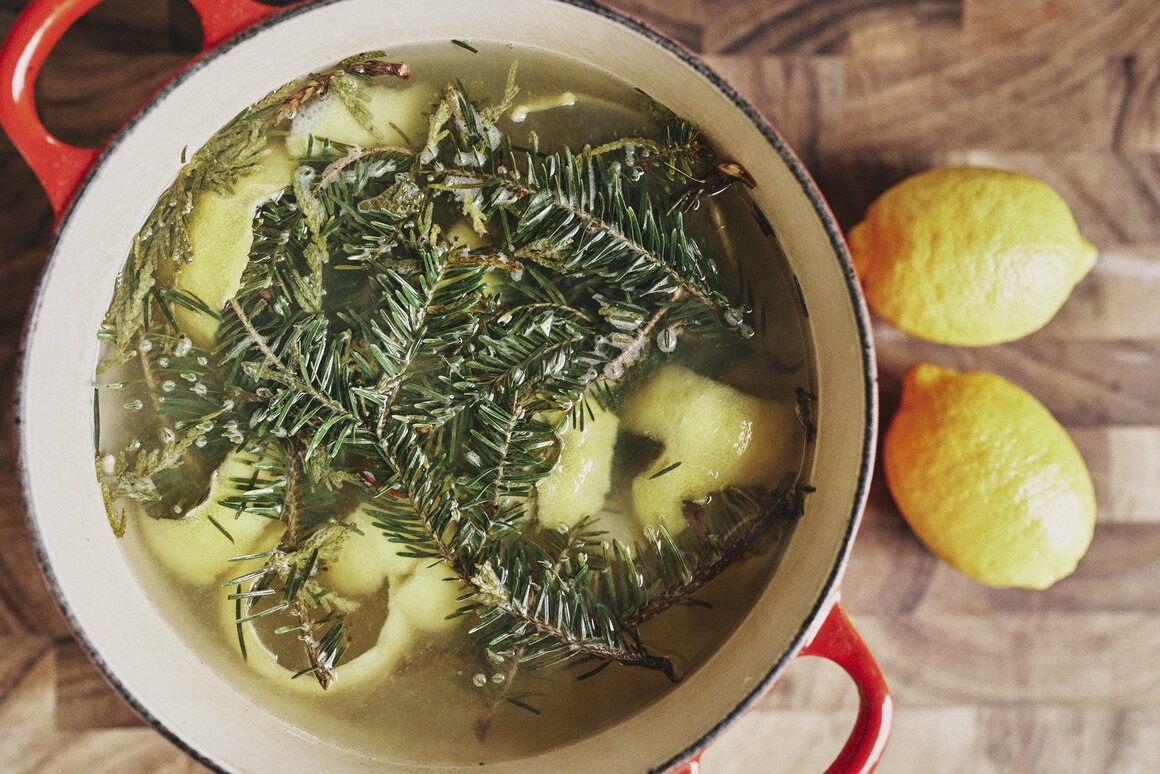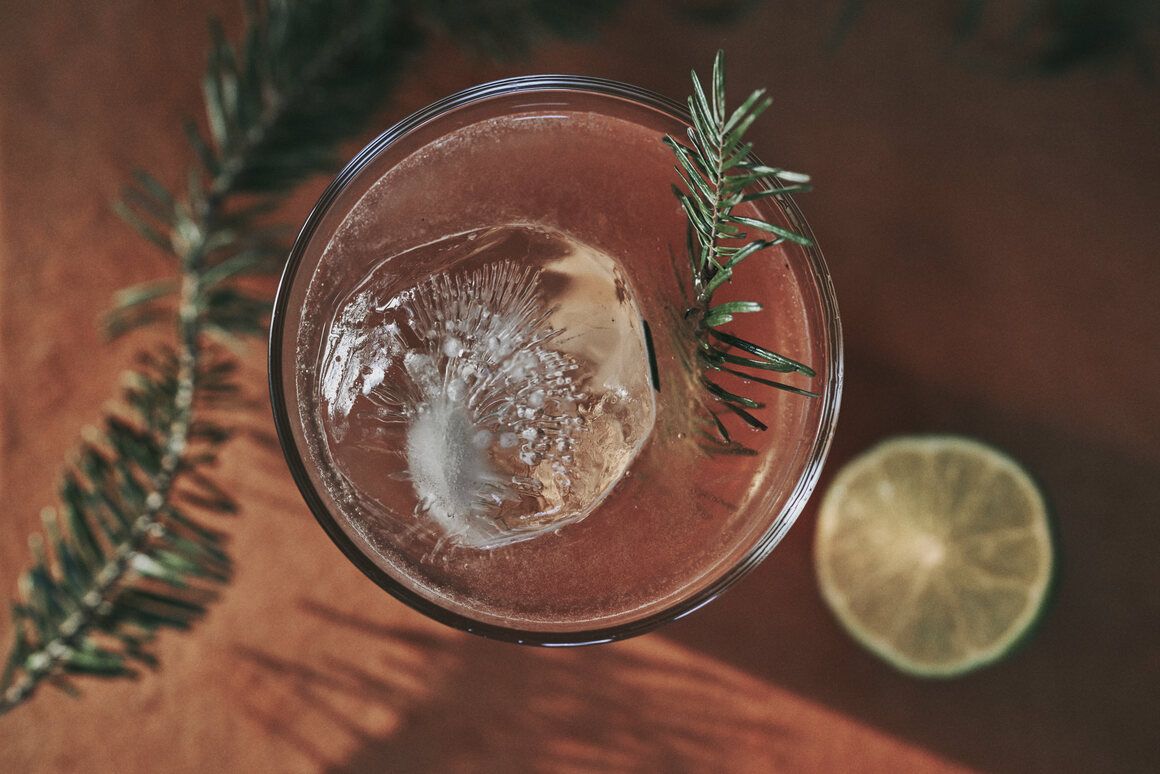On Christmas eve, we make a traditional Scandinavian warm wine drink.. Now.... there's mulled wine and then there's Glogg.... and hand's down Glogg wins. If this stuff doesn't warm you to your toes and get you in the holiday spirit... nothing will. While this recipe uses Linie aquavit, my family uses the
Aalborg brand (from Denmark).
GLOGG RECIPE SUMMARY
Warm spiced, and sometimes fortified, wine. That really is the sum of it.
Throughout Scandinavian countries, you might find this referred to as Glogg, Glögg, or Gløgg. They are all pretty close to the same thing. I am using Glogg, as it is easier for my American keyboard to accommodate. No matter how it is spelled, this Glogg recipe is delicious and is a Scandinavian offshoot of mulled wine. You may find several other recipes or your family may have slightly different Glogg recipe traditions, but they are all somewhat close. We take some wine, add sweetener, add spices, warm it up and you have a beautiful Wintertime and Holiday drink.
WHAT IS GLOGG?
We have already eluded to it as a variation of a mulled wine, but what separates Glogg from your average mulled wine? You could make the case that it is just a different name that is used for Mulled Wine for Scandinavian countries, but I like to think it is a bit more.
The two differences that make Glogg different than a traditional Mulled Wine are Aquavit and cardamom. Cardamom is a spice that comes from the pods of various plants in the ginger family. While likely originating in the southern hemisphere, it has become a spice that has become common in traditional Scandinavian dishes. It is a distant cousin of ginger and has some great flavor that works wonderfully with mulled wine and really has become a defining aspect of Glogg.
The second differentiating ingredient is aquavit. Aquavit is potato-based alcohol that is common in Scandinavian countries and also in Germany. You might be thinking this sounds like vodka, but it is much different than vodka. Aquavit also tends to contain spices and is often barrelled. Whereas vodka mostly tries to have a neutral flavor, aquavit is full of flavor.
FORTIFY WITH AQUAVIT
If you don’t use aquavit, you could use a port, brandy, Sherry, or nothing at all to fortify your glogg recipe. We, however, want to keep this recipe traditional with a bit of Aquavit. We are specifically using the
Linie brand, which has a really interesting story.
This brand has been around since 1805 and the recipe has been the same since very early on.
Linie indicates that they ship every barrel of aquavit from Norway (where it is produced) to Australia and back. Apparently, both the humidity changes and the rocking back and forth adds to the flavor of the drink. They did this in the early 1800s and have continued this on through today.
There are other brands of Aquavit that you may find. Linie is a Norwegian brand and tends to be a bit more of a robust drink than aquavits from some of the other Scandinavian countries. At my local liquor store, I also noticed there are several distillers in my region that make it. I do, however, live in the upper midwest… where many Norwegians immigrated. I recommend Line Aquavit, but use the brand you have or can find.
WHAT KIND OF WINE TO USE FOR GLOGG RECIPE?
Much like Mulled Wine and even Sangria, the kind of red wine you use is not very important. In fact, some say that Glogg came about as a way to use up marginal wine, as we add a whole bunch of spices and sugar. We used a cheap Woodridge Pinot Noir that was found on sale. Use your own discretion, but don’t spend a ton of money on your red wine. The wine will add flavor to the mix, but remember that we are adding sweetener, spices, and Aquavit to the mix.
WHAT KIND OF SPICES TO USE
Well, look at the recipe. That is what I recommend, but it doesn’t mean you can’t add your own flair to the Glogg recipe. Another option, which I leave out, would be star anise. If you use something in your Mulled Wine recipe that you think this is missing, add it in!
STRAINING THE HERBS AND OPTIONS FOR GLOGG RECIPE
In my recipe, I do not strain anything, but I did want to mention that you can. Both cloves and cardamom are not the best to bite down on. There are a few other spices that might not be everybody’s cup of tea, such as orange peel, cinnamon, and ginger. There are two possibilities that would help you reduce the possibility of getting these flavors.
First, you could strain the glogg before serving. Mind you, you want to keep the almonds and raisins in the drink, so you will want to make sure to get those good little bits back into the drink.
Second, you could add all of the spices you want to keep out of a glass into some cheesecloth. You will cook this in the crockpot and all of the flavors will still seep into the drink, but save you the trouble of worrying about biting into the things.
Personally, I like having that rustic feel of having all of the ingredients in my glass.
BLANCHING ALMONDS
The almonds you use in this recipe need to be blanched. The skin can add a bitter flavor to the drinks, so you need to remove them. Of course, you can buy your almonds already blanched, but if you buy them in bulk, like us, it is pretty easy to remove the skins.
Add the almonds to boiling water for 60 seconds. Strain them immediately and run them under cold water to stop cooking. Once the almonds are cool, you should be able to pop the almonds right out of their skins. Yes, you have to do them individually, but if you get the hang of it, it is a really quick process. Set them aside until you are ready to use them.
SUGAR VS HONEY
I keep bees, so it feels right for me to use honey. Additionally, we are dealing with a drink that goes back hundreds of years. Way back in the day, refined sugar was rarely available and meant for the rich. It was a luxury, if available at all. Honey was a more common sweetener until relatively recently (after the 1600s to 1700s), so it feels right to me to use my honey in a drink that is using such a traditional spirit as aquavit. If you are going to substitute in white sugar in this recipe, I would substitute about 1 ⅓ cups sugar for one cup of honey
SERVE WITH A SPOON
Because of the raisins and almonds in this drink, serving this with a spoon is a good way to help your guests get the little bits out. Eat up the raisins and almonds while setting the cloves, ginger, and cardamom pods to the side. A spoon certainly is not needed, but a fun and practical addition to this traditional drink.
I USED A CROCKPOT
Yes, you can make this in a big pot or pan instead of a crockpot. I like the idea of being able to dump a bunch of ingredients and it being ready a few hours later without having to do much. One thing to be aware of is that you never want to bring this mixture to a boil. Alcohol evaporates at 172 degrees Fahrenheit. Water boils at 212 degrees. You don't want the alcohol to evaporate out and if you ever bring it to a boil, you run that risk. We want to heat the temp up, but ideally, keep it under that 172-degree mark.
HOW LONG IN THE CROCKPOT?
I would say a minimum of 2.5 hours and a maximum of about 6 hours. In this recipe, we are calling for a total of three hours. The longer you allow the spices to marinate in the wine, the more flavors you are going to have.
DO YOU NEED AQUAVIT IN YOUR GLOGG?
No. Make this your own and make your own traditions. Drink what tastes good to you! While many glogg recipes call for it or another harder spirit to fortify the mulled wine, you do not need to add it to make it a legit Glogg.
HISTORY OF GLOGG
Glogg is a neat drink and touches on some of the history we have already explored with our
History of Sangria article. It really is kind of neat that Mulled Wine, Glogg, Sangria, and many of these other versions of wine drinks all share a history. Glogg definitely is a direct descendant of mulled wine and following the various historical elements of glogg will give a great picture of the history of the traditional drink
RELATION TO MULLED WINE AND HIPPOCRAS
Much like Mulled Wine, glogg has a
history with Hippocras. It seems that humans did what humans do and just started adding stuff to wine. Hippocras was born. Hippocras was a spiced and sweetened wine that could have been served warm or cold. Any sort of spice or flavorful stuff could have been added. It was filtered through a filter named “the sleeve of Hippocrates”, hence the name. The name of this drink comes from the bag that the drink was filtered through. Hippocras appears to be the grandfather of both Sangria and Mulled wine
HISTORY OF AQUAVIT
Another aspect of Glogg that we already touched on was Aquavit. I had previously mentioned that I use the
Linie brand, but Aquavit is much older than the 1805 Linie creation date. The
first known mention of Aquavit was in 1531 in a letter to a Catholic Archbishop of Norway.
While I am tying this drink to Norwegian heritage, it is a spirit that is also popular and has roots in Finland, Sweden, Denmark, and Germany. It is tied to holiday celebrations, such as Christmas
CARDAMOM SEEDS
Cardamom seeds are an important part of this drink and have become an important part of Scandinavian cooking. According to this
Ozy article, Norwegians consume 30 times the amount of cardamom than what the average person does. What is really interesting about this distant cousin of Ginger is that it is far from being native to the northern regions, but has origins in India.
While there are a few specific theories on how the spice found its way from India to its northern regions, they tend to revolve around trading routes (or conquering routes I suppose) that brought the spice from either southern or south-eastern European routes, which makes sense. You get the likes of Spain that are just a short jump to Africa and then countries like Turkey, which is right up against that Middle Eastern area. Either way, it would seem to show a natural spacial progression from India to the rest of Europe.
One of the earliest known recipe books, the
Libellus De Arte Coquinaria, has recipes from Scandinavian and German regions. In this very old Scandinavian recipe book that dates back to the early 13th century, cardamom is used.
GLOGG TRAVELS TO NORWAY
To follow the evolution of Glogg is to follow the trail of Mulled Wine and the unique ingredients we have already mentioned. If you take Mulled wine and then locationally follow the timeline of both Aquavit and Cardamom’s popularity in Scandinavia, it really starts to make sense of how the distinct regional tradition of Glogg came to be.
We know that Cardamom was being used in Scandinavia as far back as the 13th century and that Aquavit was being drunk in the 1500s.
Mulled wine
has a history that goes back to the second century when apparently created in Rome. It spread throughout Europe and was mentioned in
one of England’s oldest cookbooks in the 14th century. The act of heating wine was likely a way to warm one’s self on cool days, but also a way to make use of less than ideal wines. Adding spices and sweeteners to wine is not a new practice.
In Germany, they have something very similar to Glogg (arguably the same) called Gluwhein, which means glowing wine. Not surprisingly, Aquavit also has a fan base in Germany, so it would seem like a natural progression into Norway and Sweden.
It is said that Gluwhein (glowing wine) became Glogg in name as it traveled north.
Merriam-Webster Dictionary gives the etymology as:
Swedish glögg, from glödga to burn, mull, from glöd glowing coal, from Old Norse glōth; akin to Old English glēd glowing coal
No matter where it comes from, it is good. The three elements of cardamom, aquavit, and mulled wine met together in Scandinavia to become the holiday classic, Glogg.
- This really is such a simple recipe and you can make it your own. Here is a picture of most of the ingredients I used.
- One important element of this recipe is to take your cardamom pods and crack them open. If you have a mortar and pestle, use that. I just used a roller to crack those seeds.
- Get all the ingredients (minus the Aquavit) and put them in the crockpot.
- Add the wine. Either 2 750ml or a 1.5 l to that crockpot and allow to steep for at least 2 hours before adding the Aquafit.
GLOGG RECIPE TIPS SUMMARY
- Use cheap red wine. Pinot Noir is what we used, but a Merlot or Shiraz would work wonderfully, as well. Use your taste buds to make the flavor you want. If you like Merlot... USE IT.
- Buy Cardomom pods, but you can use just the seeds in a pinch. If using the pods, make sure to crack them open to help release the flavors.
- Any flavors that are appropriate for a Mulled Wine would also work well here.
- I use honey, but if you want to use white sugar, just use a bit more than the recipe calls for honey. 1 cup of honey would be 1 ⅓ cups of white sugar.
INGREDIENTS
- 10 cloves
- 20 green cardamom pods… cracked
- 2 bottles Pinot noir (2x750 ml)
- 4 inches ginger
- ½ cup raisins
- ½ cup blanched almonds
- 1 orange peel
- 1 cup honey
- 2 cinnamon sticks
- ½ cup Aquavit
INSTRUCTIONS
- Add all ingredients minus the aquavit to a crockpot and heat on low for at least 2.5 hours and up to 6. Make sure this never reaches a boil, but is warm enough to heat the mixture.
- Add ½ cup of Aquavit 30 minutes prior to serving.
- Serve in coffee mug with spoon so your guest can eat the almonds, raisins
NOTES
- OPTIONALLY, put all non-edible spices (cloves, cinnamon, ginger, orange, cardamom) in a cheesecloth container before adding to crockpot.
- Optionally, strain out cloves, cinnamon, ginger, orange, and cardamom before serving.
- If you are not going to drink all of it, I would recommend straining out the bits before putting in refridgerator.
NUTRITION
- Serving Size: 1 mug
- Calories: 416
- Sugar: 42 g
- Sodium: 18 mg
- Fat: 5 g
- Saturated Fat: 0 g
- Unsaturated Fat: 5 g
- Carbohydrates: 51 g
- Fiber: 2 g
- Protein: 3 g
- Cholesterol: 0 mg

